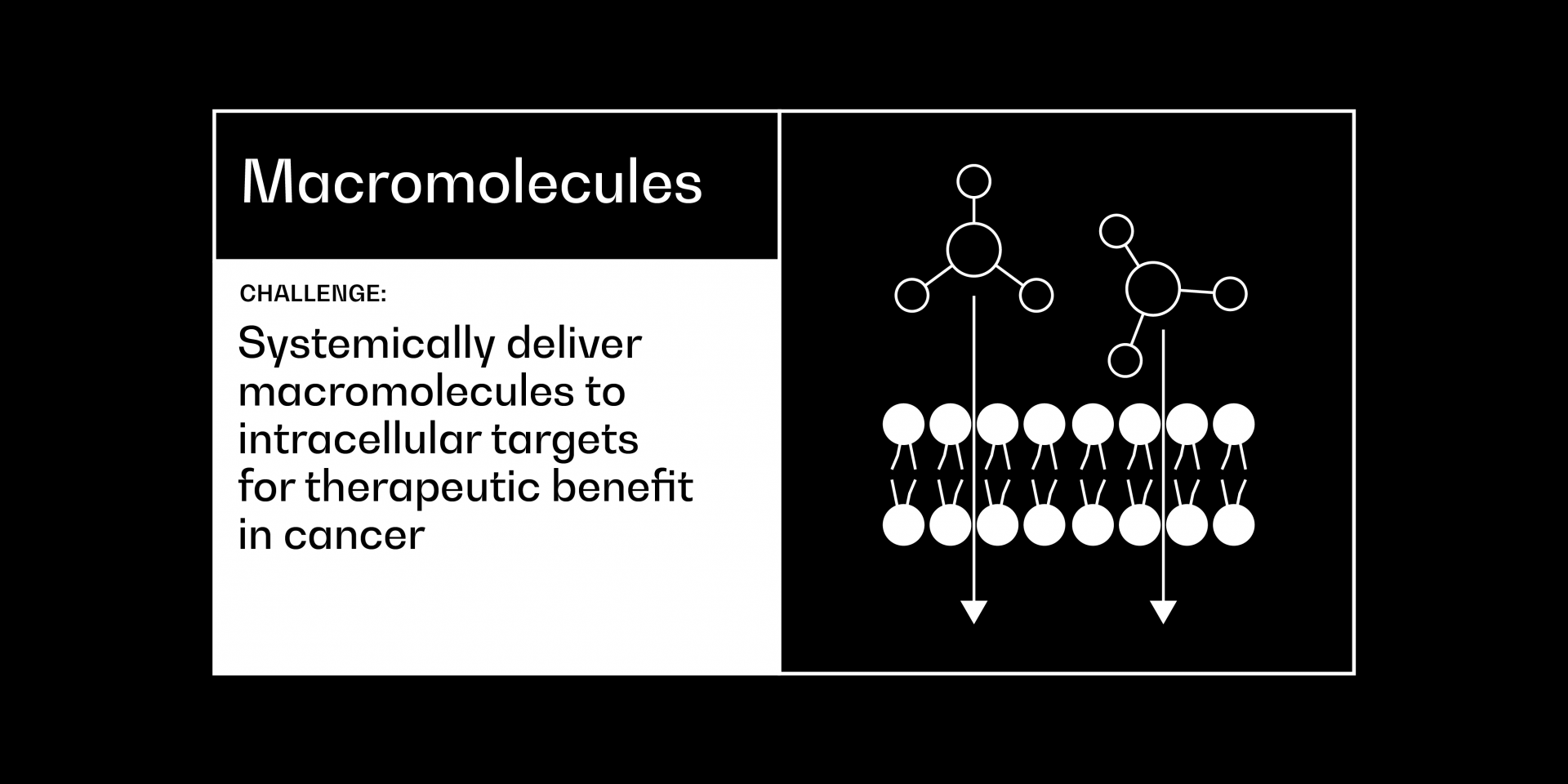
Macromolecules (2020)
Challenge: Systemically deliver macromolecules to intracellular targets for therapeutic benefit in cancer
This was a challenge in an earlier round, we are not currently accepting applications for this challenge.
Context
In recent years, scientists have been experimenting with ‘macromolecules’ to target and destroy cancer cells. A macromolecule is defined as any very large molecule, with a molecular weight exceeding about 1,500 Daltons. These macromolecules can disrupt the processes that cancer cells use to survive, for example by stopping them from growing or by flagging their presence to the body’s immune system. Importantly, they can be engineered to be far more specific and active than current small molecule therapies.
This approach is often effective on cancer cells in the laboratory, but unlike conventional ‘small molecule’ treatments, it is difficult to deliver these macromolecules systemically to the inside of cells where they need to act and engage with their target.
If we could develop approaches to deliver these macromolecules to any and every cell in the body, including the central nervous system, ensuring they crossed the cell membrane and engaged with their target, it would create new ways to treat cancer and could also have a significant impact on other diseases.
Barriers and opportunities
The exact barrier in delivering macromolecules is crossing the cell membrane to enter the cytoplasm and nucleoplasm where target molecules reside. Many molecules that bind to the cell surface enter endosomes but cannot escape that membrane compartment. Bacterial protein toxins have evolved mechanisms of endosomal escape and certain macromolecules, such as cyclosporin, have an intrinsic ability to cross membranes. Viruses can deliver both DNA and RNA into the cell, providing a precedent for an intractable problem.
New approaches to tackle this challenge could involve:
- The use of novel nanoparticles that mimic viruses
- Engineered proteins that use toxin like mechanisms
- Exploiting a deep understanding of the design principles that allow certain macrocyclic peptides to cross the membrane by passive diffusion
It will also be important to measure target engagement as part of this challenge, so developing suitable assay systems and potent metabolically stable macromolecules will also be required.
Approaches should be practical, affordable and innovative around cellular mechanisms of uptake that can be developed for use in humans.
Vision and Impact
Success in answering this challenge would be the demonstration of efficient cellular entry and target engagement of a number of macromolecules in animal models. It would be desirable to demonstrate that the approach worked for multiple targets e.g. Myc, Ras, Mdm2, EWS-Fli1. Ultimately, a universal delivery system for macromolecules would be transformative allowing thousands of new targets to become “druggable “and improving outcome for cancer patients.
Addressing this challenge will require a multidisciplinary team, which may include expertise in material science, membrane chemistry, virology, microbiology, molecular cell biology and pharmacology.
Plain language summary: Why macromolecules?
Getting drugs inside the cells they need to affect is a major problem faced by scientists when designing new treatments. This task is particularly challenging for larger and more complex drugs – known as macromolecules – that are too big to slip into cells without help.
This Cancer Grand Challenge invites scientists from across disciplines to work together to develop new ways to deliver our most promising macromolecule drugs to any and every cell in the body, including hard-to-reach places like the brain.
Innovative delivery methods could include nanoparticles – tiny, drug-carrying vessels 1,000 times smaller than a human hair – or strategies mimicking the tactics viruses and toxins use to infiltrate cells. Novel approaches like these could unlock new ways to treat not only cancer but also many other diseases.